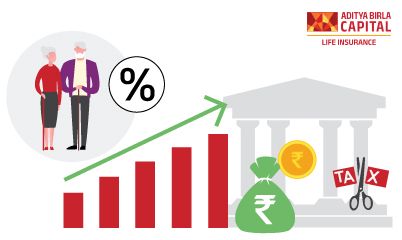"Ek se bhale do" (two is better than one), right?! After all, hitting two birds with one stone is preferable. Why settle?
That's the underlying thought behind a Unit-Linked Insurance Plan or ULIP. It's an investment option that comes with an insurance cover, thus hitting both your goals—protection as well as wealth creation.
The money that you invest in a ULIP is managed by a Fund manager. S/he invests in a wide variety of investments like stocks, bonds, and so on.
Typically, at the start of the investment, you would select a 'Fund'. This helps you direct the fund manager towards one type of investment, say Stocks or Debt instruments. After all, your money needs to be invested based on your requirements, right? If you prefer a low-risk investment option, then you may not want to invest in Equity. And vice versa.
That said, if you ever wish to change your Fund and move to another, you can always switch between Funds.
The what and the why of rebalancing
Think about it. Your preferences and requirements may change throughout life. For example, as a 25-year-old, you may have been able to take greater risks. Thus, you or your financial advisor may have invested a great proportion of your money in Equity. However, as a 45-year-old, your risk-taking ability may be lower. You, thus, may need to invest a smaller portion of your portfolio money in Equity and more in Debt investment options.
This is why financial advisors always recommend reviewing your goals and your investments every year. And when needed, rebalance the portfolio to suit your new investment preferences as well as risk profile changes.
How ULIP helps rebalance your portfolio
Here's where this gets interesting. When you invest in a ULIP, you can always switch between Funds. If you were to do the same with a Mutual Fund, you would have to sell your MF units in one Fund and reinvest it in another. This is considered as redemption. So, you may then have to pay tax on the profits you made (subject to the then Income tax laws). Also, some MFs may charge you an 'Exit Load' depending on when you sell your investments
With a ULIP, however, switching between funds does not attract any tax or charges. Thus, it becomes a more seamless procedure with little paperwork.
In fact, ULIP is the only investment option where the investors can seamlessly switch between debt and equity multiple times in one policy year without any charges or taxation.
This helps investors when they wish to rebalance their portfolio.
When to rebalance?
There are many factors to consider when you want to switch between Funds and rebalance your portfolio.
- Personal factors
Your investment goals and financial situation may change with time. Similarly, your risk appetite rises and falls with time too. For example, when you have a family of four dependent on your income and investments, you may have a lower risk appetite. But, if you have paid off all your debt, or the number of people dependent on your income has decreased; at such times, you may be able to take on more risk. You may then want to increase your investments in Equity.
- External factors
Many factors can affect your investments. Equity markets, for example, go through bull and bear runs. Debt instruments, meanwhile, are affected by inflation and interest rates. When interest rates are expected to start falling, fund managers may want to start buying debt instruments. This is because, the price of instrument or bond value is inversely proportional to interest rates – the value increases when the rates fall. So, the debt funds may give higher returns at such times. If you are a savvy investor, you may keep an eye out for such changes in investment trends, and then decide to switch between Funds.
An important point to remember:
The most important reason to rebalance is to maintain your ideal asset allocation. So don't take this decision lightly. It can affect your overall risk exposure as well as the returns you get.
How to switch Funds with ULIP?
Rebalancing is simple. Just opt for the switching facility and change the asset allocation of the funds. You can choose new funds and even switch out of existing funds completely.
Here are some things which you should know about switching –
Insurance companies allow a specified number of free switches. You can get 4 to 52 free switches in a year. Some plans also allow unlimited free switching.
- Insurance companies allow a specified number of free switches. You can get 4 to 52 free switches in a year. Some plans also allow unlimited free switching.
- Switching does not affect your insurance coverage, i.e., the sum assured. Your sum assured depends on the premium amount, age and the policy tenure. It has nothing to do with your asset allocation.
- There is no tax implication with switching. Unlike all other investment products, there are no short-term capital-gain or long-term capital-gain tax implications, for switching between equity and debt.
- Switching is voluntary. Unless you choose to switch, it wouldn't be done automatically.
Automated rebalancing – a new way to rebalance
Many ULIPs offer you the choice of automated rebalancing. Under this facility, your fund value gets automatically rebalanced every year or at specific trigger points.
For example, say, the targeted equity allocation is 50% and the trigger level is 55%. So, if your fund's equity exposure crosses 55%, the rebalancing would be triggered. Your fund would be rebalanced automatically in such a manner that the equity exposure would be restored to 50%.
Some funds also have a life stage rebalancing option. In such a case, your debt exposure would systematically increase as your age increases.
You can choose the automated rebalancing option when buying a ULIP plan or at the time of renewal. You can also move out of the automated rebalancing option if you want to manage your investments yourself.
Last words
ULIPs give you dual benefits – that of insurance protection as well as investment returns. Moreover, with ULIPs you get to invest in a choice of asset classes, from equity to debt and everything in between. So, even when your investment preference and risk profile changes, which might happen over the policy duration, you can rebalance your ULIP portfolio.










